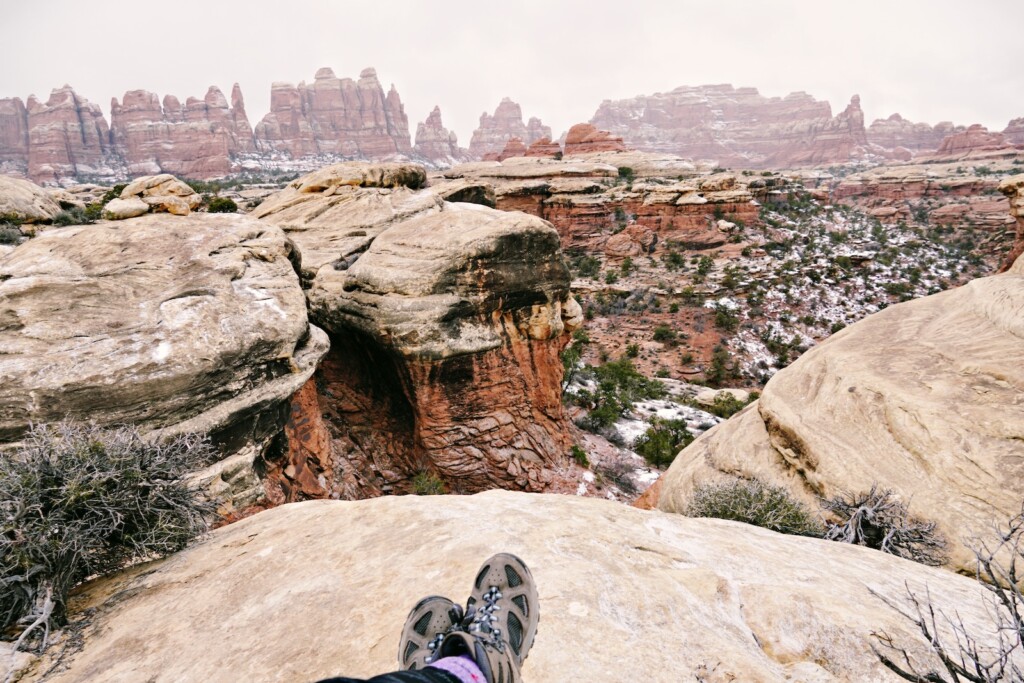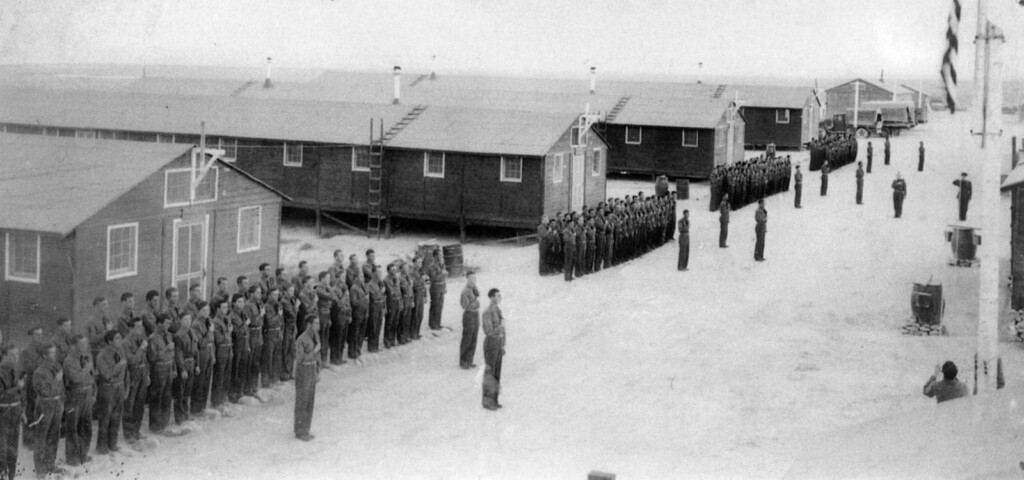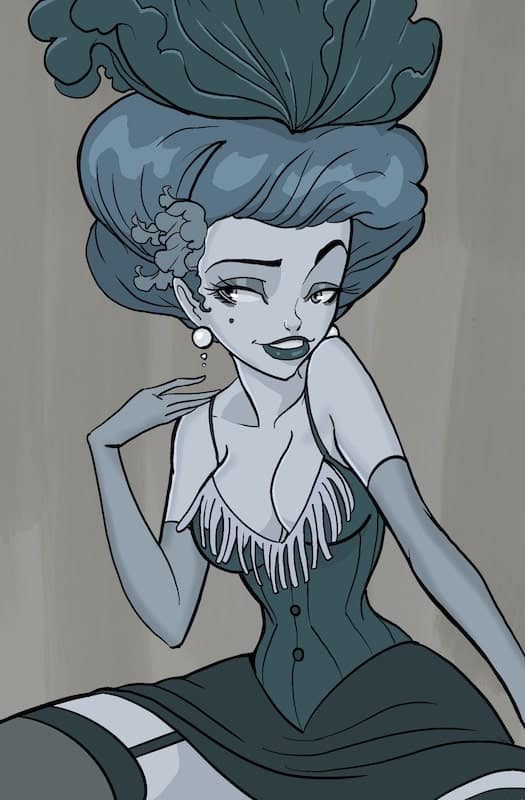
Red Lights & Scarlet Ladies Salt Lake’s Early Brothels
You won’t read about it in the history books, and you won’t hear about it at Sunday School, but Salt Lake’s early days were rife with vice, including prostitution.
Although the Mormon settlers practiced virtuous living and eschewed sins of all sorts, it wasn’t long before the saloons, gambling halls and fleshpots of modern civilization became a fact of frontier life in this young and thriving metropolis in the desert.
Since the beginning of time, men have had an itch that needs scratching, and the “oldest profession,” as it is known, has always been there to satisfy their desires. Brothels, pleasure palaces, bordellos, cat houses, parlor houses, whorehouses, and houses of ill repute (they went by many names) were not hard to find in Salt Lake’s otherwise wholesome streets, often occupying spaces above legitimate businesses, where “ladies of the night” could make a prosperous if not reputable living in such a socially shameful way.
The Pioneers arrived in 1847, and prostitution was already well-established in Salt Lake by the 1850s. Despite being illegal, city officials chose to regulate the illicit trade rather than eliminate it, which would have been nearly impossible by that time.
Considered a “necessary evil” by city officials, prostitution was controlled by laws that appealed to a predominantly middle-class morality while providing welcome revenue.
According to writer Megan van Frank, “By the 1870s, downtown’s Commercial Street [Modern-day Regent Street between 1st and 2nd South] was the center of Salt Lake’s ‘red-light’ district, with saloons and parlor houses that accommodated ‘female boarders.’ Police raided these establishments regularly to arrest these ‘female boarders.’ But eventually a registration system evolved whereby the madams who ran these brothels provided the police a list of the women who worked for them. Each woman then paid a monthly fine of $10, a tidy arrangement that bolstered the City’s coffers.”
By 1896, at least six brothels, cribs, saloons, gambling houses and parlor houses dotted the city, leading to the idea of The Stockade.
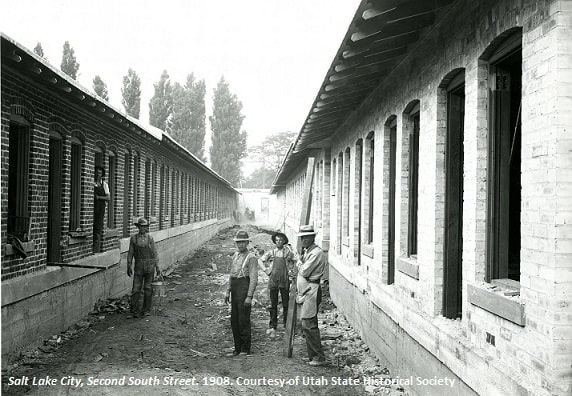
Built under the direction of Salt Lake Mayor John Bransford in 1908, The Stockade was a compound where prostitution could be more closely regulated and better hidden from public view.
“I propose to take these women from the business section of the city and put them in a district which will be one of the best, if not the very best, regulated districts in the country,” Bransford boasted.
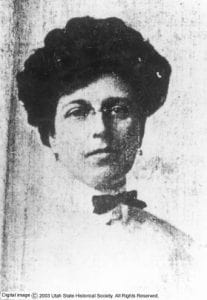
Again, in van Frank’s words, “Bransford invited Mrs. Dora Topham, a notorious Ogden madam known as ‘Belle London,’ to take charge of the new enterprise. The block between 5th and 6th West and 1st and 2nd South was chosen for construction of ‘The Stockade,’ which consisted of 100 small brick ‘cribs’ built in rows that surrounded six larger parlor houses. The Stockade entrances were guarded to keep out children and ‘undesirable’ guests. Women paid rent of $1-$4 per day and were prohibited from doing business elsewhere in the city.”
Cribs in The Stockade were 10-feet square and divided by a curtain. Each one contained a washstand, chair, and bed. Police conducted regular raids of this and other establishments and sometimes physically inspected the women for infectious diseases.
Neighbors detested The Stockade, and a citizen’s league was formed to abolish it. After just three years, the “bordello village” was purged and torn down, with many of the “soiled doves” returning to Commercial Street, which, according to van Frank, “remained a red-light district into the 1930s. Others stayed in the neighborhood of West 2nd South, which remained an area for prostitution until the 1970s.”
Other famous Salt Lake madams included Miss Helen Blazes, Miss Ada Wilson and Catherine Flint, each of whom operated luxurious parlor houses that catered exclusively to wealthy clientele. No one knows how wealthy these women became, but Flint reportedly bought a used carriage from Brigham Young and had it adorned with her own coats of arms.
Who were the affluent, high-society gentlemen that patronized Salt Lake’s most expensive prostitutes in those early years? We can only wonder.
RELATED CONTENT
Salt Lake City Prostitution, Drugs & Theft
Pete Marshall Recounts Plum Alley and The Chinese Tong and Mafia in Salt Lake
Helper’s Brothel and Mining History: According to Tino
A History of Violence: Ogden’s 25th Street
SUPPORT LOCAL JOURNALISM AND SUBSCRIBE TO PRINT MAGAZINE
Subscribe to Utah Stories weekly newsletter and get our stories directly to your inbox



